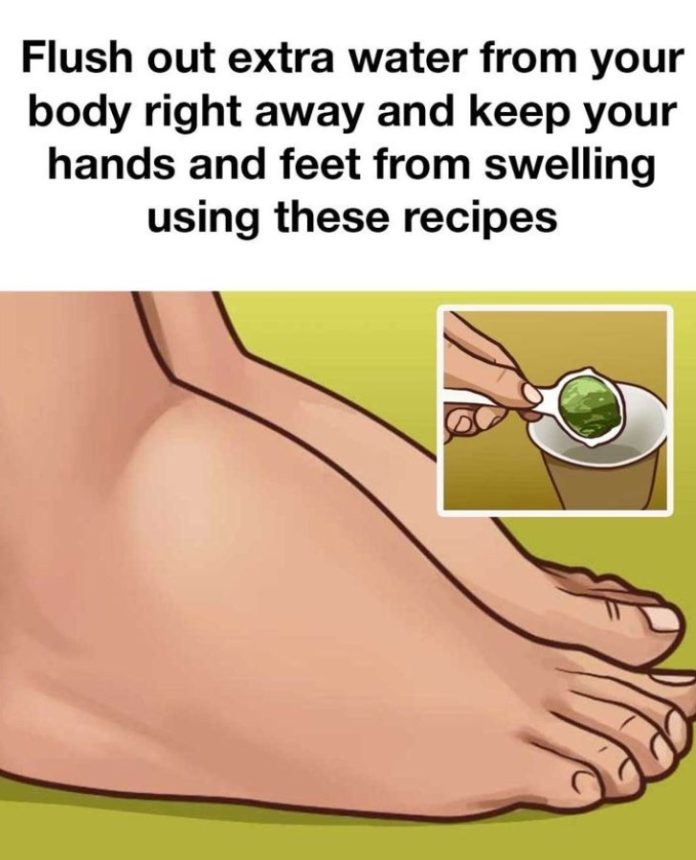Water retention, also known as edema, is a condition where the body retains excess fluid, often leading to swelling, especially in the extremities. While mild water retention tends to resolve on its own, persistent or severe cases can be bothersome and may indicate an underlying health issue.
Understanding the causes, symptoms, and practical ways to manage fluid retention can help you maintain a balanced and healthy body. From hydration and dietary changes to natural remedies, this guide offers effective strategies to help reduce water retention and keep your body functioning optimally.
Understanding Water Retention: Causes and Symptoms
Water retention occurs when the body holds onto too much fluid, often as a response to certain lifestyle habits or health conditions. Common reasons for fluid retention include excessive salt intake, hormonal fluctuations, certain medications, sedentary behavior, and underlying medical conditions such as kidney or heart problems. It’s essential to identify the cause to address the problem effectively and prevent its recurrence.
Recognizing the Signs of Water Retention
Swelling in the hands, feet, and ankles is one of the most obvious signs of water retention. The affected area may feel stiff, heavy, or puffy, and the skin might appear stretched or shiny. In more severe cases, pressing on the swollen area may leave an indentation. Noticing these signs early on is crucial to preventing further discomfort and managing the condition effectively.
The Role of Hydration in Preventing Water Retention
It may sound counterintuitive, but staying hydrated is key to preventing water retention. When the body is dehydrated, it responds by holding onto excess fluid as a protective mechanism. Drinking plenty of water throughout the day ensures that the kidneys function properly, helping to flush out excess salt and toxins from the body. Maintaining a good balance of hydration can significantly reduce the risk of water retention.
Dietary Changes to Combat Water Retention
What you eat plays a pivotal role in managing fluid balance. Diets high in sodium, often found in processed and junk foods, contribute to water retention. To reduce swelling, it’s important to cut back on salt and incorporate more potassium-rich foods like sweet potatoes, bananas, and leafy greens. These foods help balance sodium levels in the body and promote proper fluid regulation. A balanced diet with plenty of fresh fruits, vegetables, lean proteins, and healthy fats supports overall health and fluid balance.
Foods that Naturally Help Detoxify the Body
Certain foods act as natural diuretics, helping to eliminate excess water through urine. Incorporating these foods into your diet can aid in reducing water retention. Examples include:
- Citrus fruits like lemons, oranges, and grapefruits
- Cucumbers, which have a high water content and promote hydration
- Watermelon, which is packed with water and can help flush out excess fluids
- Celery, known for its mild diuretic effect
These foods not only help with water retention but also provide essential nutrients for overall health.
Herbal Teas to Reduce Swelling
Herbal teas can be a soothing and effective remedy for water retention. Teas such as dandelion, parsley, and green tea have natural diuretic properties that help the body expel excess fluids. Drinking one or two cups of these teas daily can aid in reducing swelling, especially in the hands and feet, while providing additional antioxidants that support overall health.
Epsom Salt Soaks for Reducing Swelling
A relaxing way to alleviate swelling is through an Epsom salt soak. Epsom salts, which contain magnesium sulfate, can help reduce inflammation and promote fluid balance. For a simple remedy, add ½ cup of Epsom salt to a basin of warm water and soak your feet or hands for 15 to 20 minutes. Doing this several times a week can offer significant relief from swelling.
Low-Inflammatory Smoothie Recipe to Start Your Day
An easy, anti-inflammatory smoothie is a great way to start your day and help combat water retention. Here’s a simple recipe you can make at home:
- 1 cup pineapple chunks (rich in bromelain, which reduces inflammation)
- 1 cup kale (loaded with antioxidants and potassium)
- ½ cucumber (hydrates and supports detoxification)
- 1 tbsp chia seeds (packed with omega-3 fatty acids and fiber)
- Juice of ½ lemon (helps flush out toxins)
- 1 cup coconut water (naturally hydrating)
Blend all ingredients until smooth, and enjoy this refreshing, hydrating smoothie first thing in the morning to kickstart your day.
Make Your Own Natural Diuretic Drink
If you’re looking for an easy-to-make, natural diuretic, try this refreshing drink:
- ½ cucumber (hydrates and promotes detox)
- 1 cup cranberry juice (aids kidney function)
- 1 cup watermelon (helps eliminate excess fluids)
- Juice of 1 lemon (boosts detoxification)
Blend the ingredients together and enjoy this drink in the morning or early afternoon for an effective way to reduce water retention and stay hydrated throughout the day.
Hydrating Detox Soup Recipe
Another delicious way to combat water retention is by incorporating a hydrating, detoxifying soup into your diet. Here’s a simple recipe you can prepare:
- 1 tbsp olive oil
- 1 chopped onion
- 3 minced garlic cloves
- 4 cups low-sodium vegetable broth
- 1 cup chopped celery
- 1 cup chopped carrots
- 2 cups spinach
- 1 tbsp fresh parsley
- Salt and pepper to taste
In a large pot, sauté the onion and garlic in olive oil until fragrant. Add the vegetable broth, celery, carrots, spinach, and parsley. Let the soup simmer for 20-25 minutes. Season with salt and pepper, and enjoy this nutritious, hydrating soup that can help flush out excess fluids.
Lifestyle Changes to Minimize Water Retention
Along with dietary adjustments, incorporating healthy lifestyle habits can significantly reduce water retention. Regular exercise improves circulation and helps prevent fluid buildup in the extremities. Elevating your legs at the end of the day, wearing compression stockings, and practicing stress management techniques can all contribute to better fluid balance. Additionally, ensuring you get enough sleep each night supports your body’s natural processes for eliminating excess fluid.
Final Thoughts: Maintaining a Healthy Fluid Balance
Managing water retention requires a holistic approach that includes staying hydrated, making mindful dietary choices, and incorporating natural remedies into your routine. By recognizing the signs of water retention and implementing these strategies, you can effectively manage swelling and promote better overall health. Whether it’s through a detoxifying smoothie, a soothing herbal tea, or a hydrating soup, small changes in your diet and lifestyle can make a significant difference in reducing water retention and supporting a balanced fluid level in your body.
By adopting these simple yet powerful practices, you can ensure your body remains hydrated, healthy, and in perfect balance.
Conclusion :
Incorporating simple dietary changes, natural remedies, and mindful lifestyle habits can significantly reduce the discomfort of water retention while promoting overall health. By staying hydrated, opting for diuretic-rich foods and beverages, and incorporating effective practices like Epsom salt soaks and herbal teas, you can support your body’s natural ability to regulate fluid balance.
Recognizing the early signs of water retention and acting promptly can prevent further complications and improve your quality of life. With the right approach, maintaining a healthy fluid balance becomes an achievable goal, ensuring that your body remains in optimal condition. By making these small yet impactful changes, you can feel more comfortable and healthier every day.










